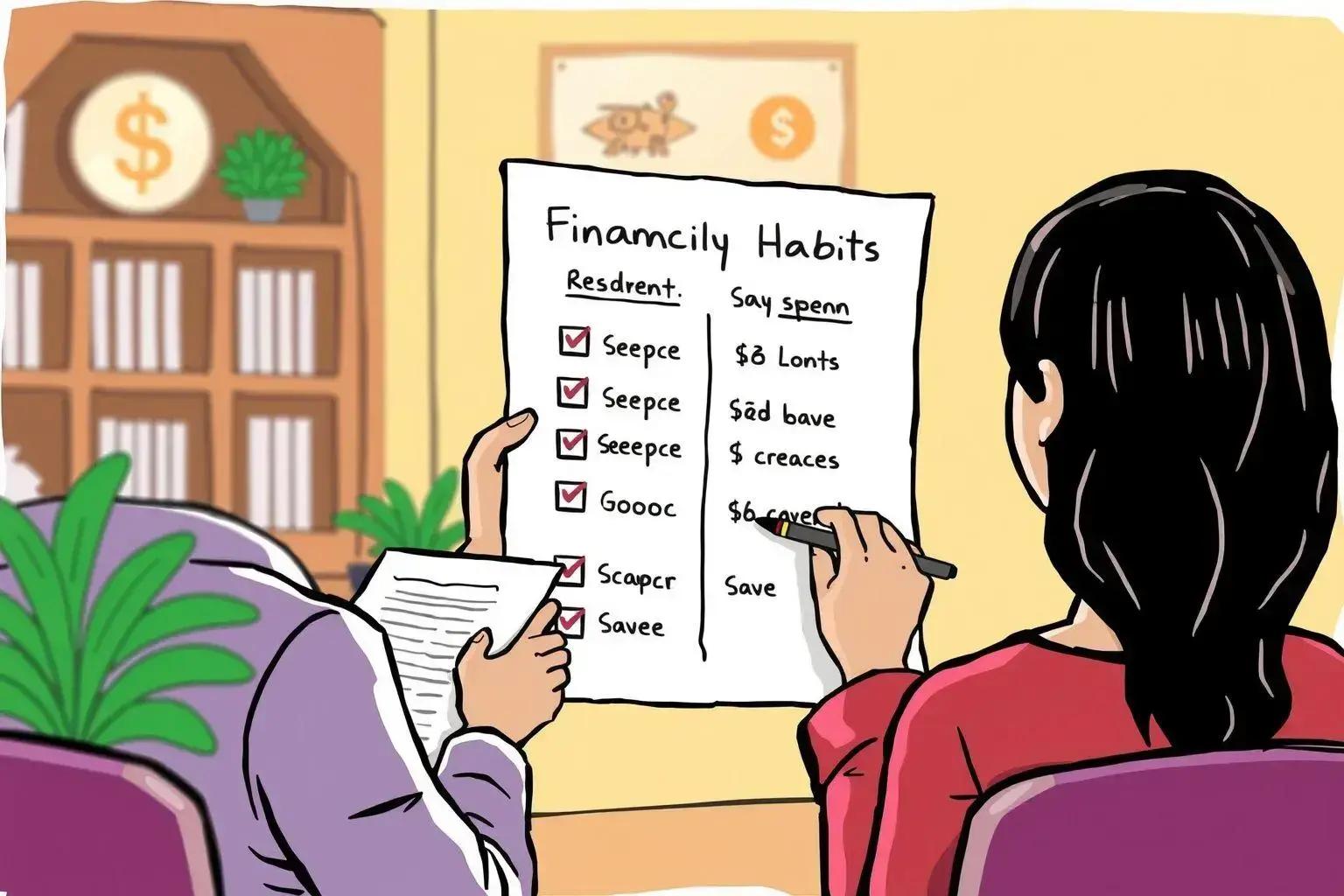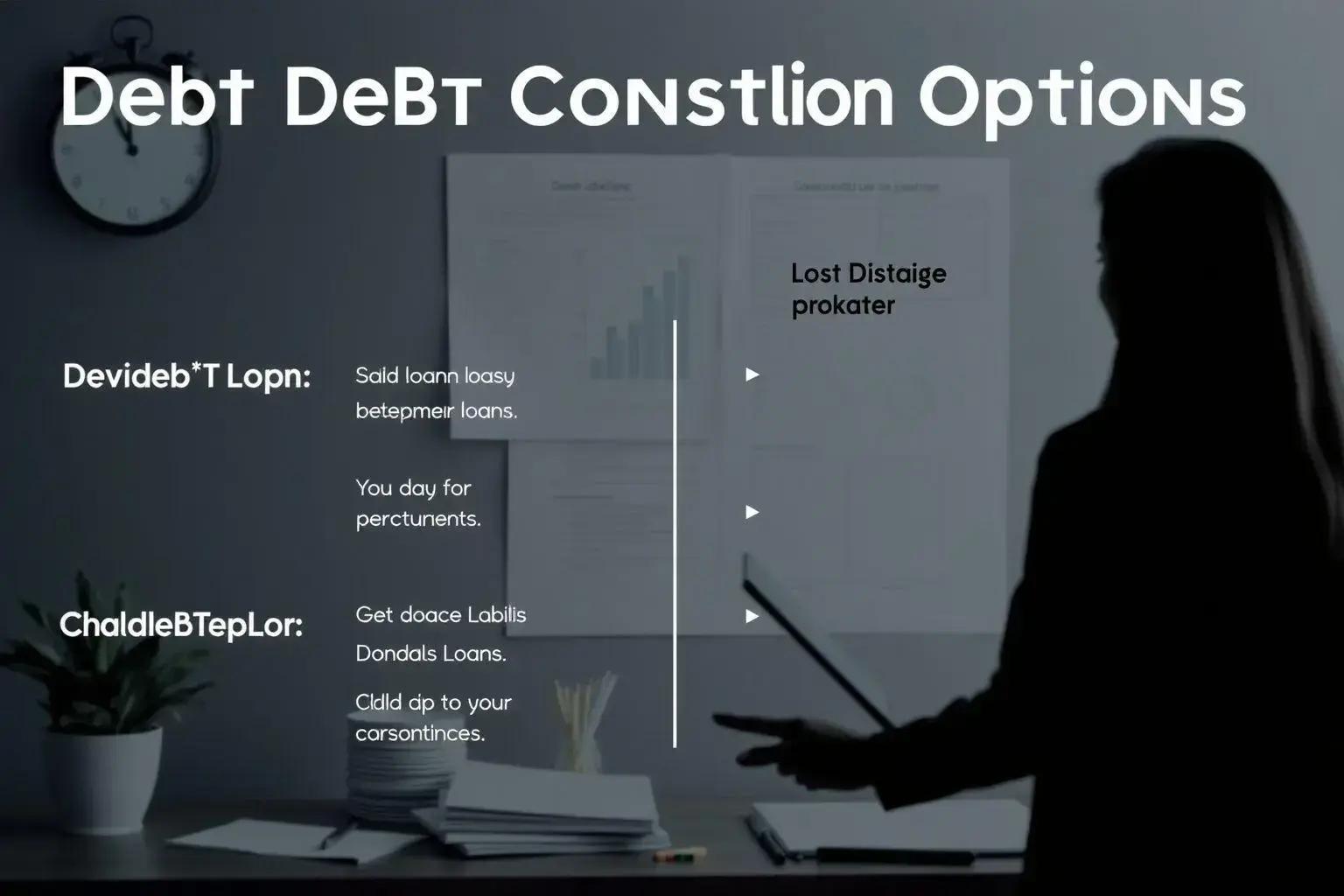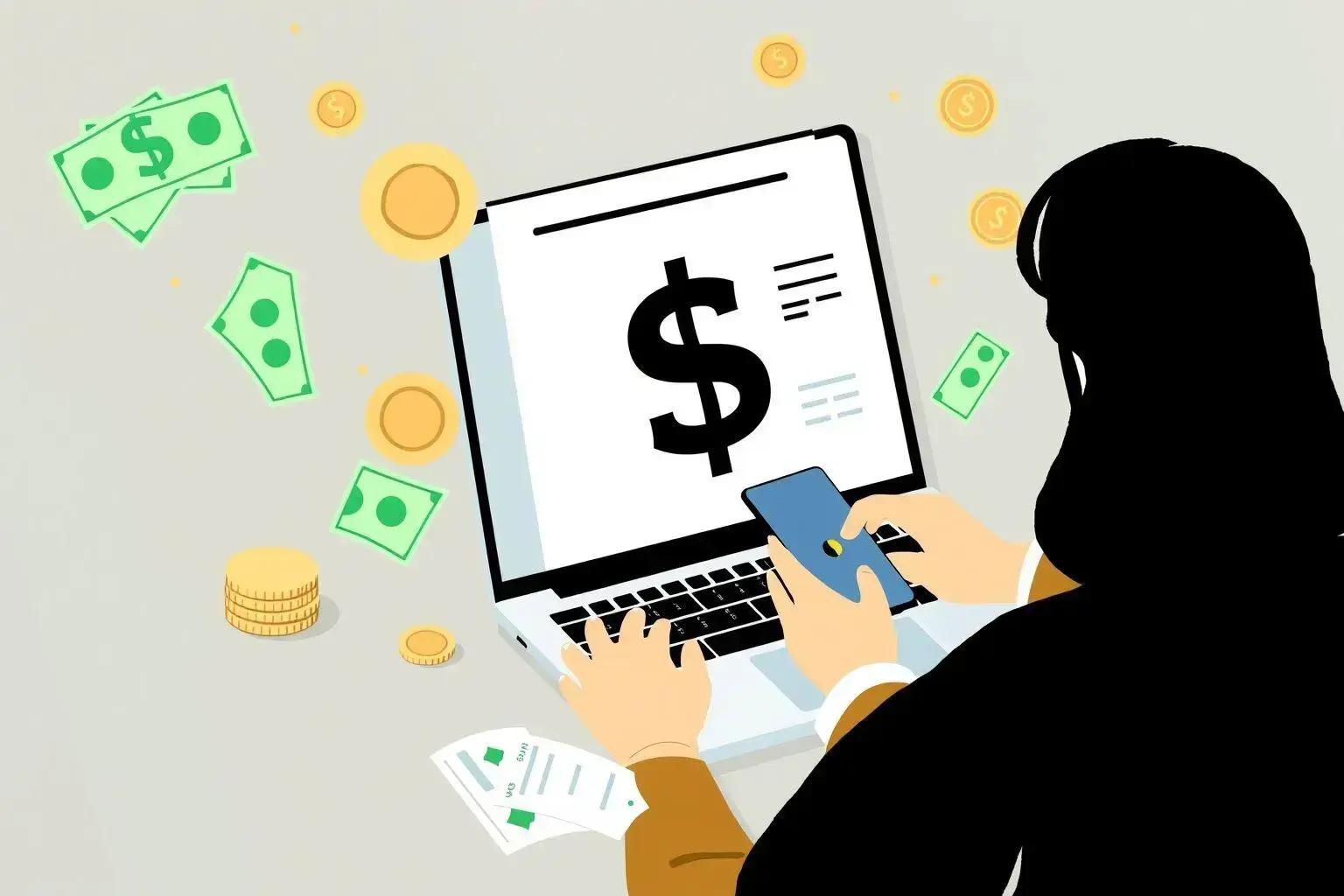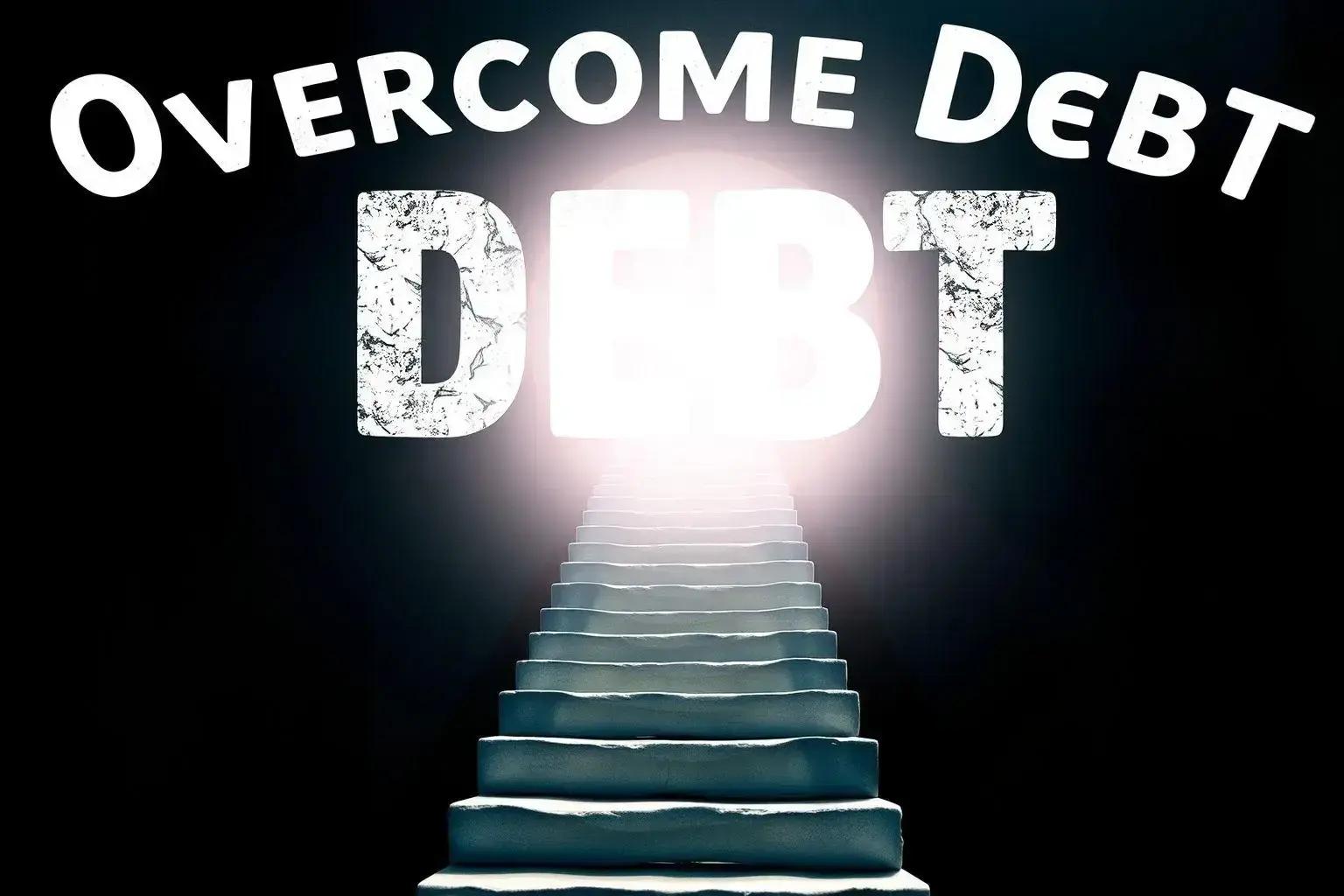Getting out of debt requires a strategic approach that includes understanding your financial habits, creating a realistic budget, using methods like the Snowball Method, negotiating with creditors, building an emergency fund, and increasing your income while staying motivated and avoiding future debt traps.
If you’re looking to get out of debt, you’re not alone. Many people struggle with financial challenges and overwhelming debt. It’s crucial to take proactive steps toward regaining control of your finances. In this guide, we’ll explore effective strategies and tips to help you pave the way toward financial freedom.
All Contents
- 1 Understanding Debt and Its Impact
- 2 What is Debt?
- 3 Identifying Your Financial Habits
- 4 Self-Assessment of Financial Habits
- 5 Creating a Realistic Budget Plan
- 6 Steps to Create a Realistic Budget
- 7 Exploring Debt Consolidation Options
- 8 What is Debt Consolidation?
- 9 Using the Snowball Method Effectively
- 10 Steps to Implement the Snowball Method
- 11 Negotiating with Creditors
- 12 Steps to Negotiate with Creditors
- 13 Building an Emergency Fund
- 14 Steps to Build an Emergency Fund
- 15 Tips for Increasing Your Income
- 16 Strategies for Increasing Your Income
- 17 Staying Motivated During the Process
- 18 Strategies to Stay Motivated
- 19 Avoiding Future Debt Traps
- 20 Effective Strategies to Avoid Debt Traps
- 21 Conclusion: Your Path to Financial Freedom
- 22 FAQ – Frequently Asked Questions About Getting Out of Debt
Understanding Debt and Its Impact
Understanding debt is vital for anyone looking to regain control of their financial situation. Debt can impact your life in many ways, affecting your mental and emotional well-being. In this section, we will explore different aspects of debt and its consequences.
What is Debt?
Debt occurs when you borrow money to purchase goods or services and commit to paying it back with interest. There are two main types of debt:
- Secured Debt: This type of debt is backed by collateral, like a house or car. If you fail to make payments, creditors can claim the asset.
- Unsecured Debt: This type of debt is not backed by any collateral. Credit cards and personal loans typically fall into this category.
The Impact of Debt on Your Life
Debt affects your life significantly. Understanding these effects can help you make informed decisions:
- Financial Strain: High levels of debt can lead to financial stress and limit your ability to save for the future.
- Credit Score: Carrying too much debt can negatively impact your credit score, making it harder to secure loans or get favorable interest rates.
- Mental Health: Living with debt can cause anxiety, depression, and other emotional issues.
Long-Term Consequences
If unaddressed, debt can lead to long-term financial challenges:
- Bankruptcy: In severe cases, overwhelming debt may lead to bankruptcy, which has serious legal and financial implications.
- Limited Opportunities: High debt levels can prevent you from buying a home, starting a business, or making other significant investments.
The first step in getting out of debt is understanding its impact on your life. By acknowledging the issues, you can start creating a plan to regain control.
Identifying Your Financial Habits

Identifying your financial habits is a crucial step in the journey to get out of debt. By examining your spending and saving patterns, you can gain insights into your financial behavior. Understanding these habits allows you to make necessary changes and improve your overall financial health.
Self-Assessment of Financial Habits
Begin by conducting a self-assessment of your financial habits:
- Track Your Spending: For at least a month, keep a record of every purchase you make. This will help you see where your money goes.
- Analyze Your Needs vs. Wants: Differentiate between essential expenses and discretionary spending. This can highlight areas where you can cut back.
- Examine Savings Patterns: Look at how often you save money. Identify if you prioritize saving over spending or the opposite.
Common Financial Habits to Identify
Here are some common financial habits to recognize:
- Impulse Buying: Buying items on a whim can lead to unnecessary expenses and contribute to debt.
- Failing to Budget: Without a clear budget, it is challenging to manage your finances effectively. A budget helps you plan your spending and savings.
- Neglecting to Save: Consistently not saving can lead to financial insecurity and increase the risk of accumulating debt.
Tools for Identifying Financial Habits
Several tools can help you identify your financial habits:
- Budgeting Apps: Utilize apps to monitor spending and track expenses, making it easier to stay on top of your finances.
- Financial Journals: Keeping a financial journal can help you reflect on your daily spending and recognize patterns.
- Financial Advisors: Consulting a financial advisor can provide personalized insights and help you identify detrimental habits.
By recognizing your financial habits and understanding how they affect your life, you can take the first step toward a healthier financial future. This process will empower you to make informed decisions and kickstart your path to get out of debt.
Creating a Realistic Budget Plan
Creating a realistic budget plan is an essential step in your journey to get out of debt. A well-structured budget helps you track your income and expenses, ensuring that you allocate your resources effectively. Here’s how to create a budget that works for you:
Steps to Create a Realistic Budget
Follow these simple steps to create your budget:
- Gather Financial Information: Collect all your income sources and expenses. This includes pay stubs, bills, and bank statements.
- Track Your Income: Determine your total monthly income. Be sure to include any side hustles or additional earnings.
- List All Expenses: Identify your fixed and variable expenses. Fixed expenses are regular payments, like rent or mortgage, while variable expenses may fluctuate, like groceries or entertainment.
Classify Your Expenses
Once you have a list of expenses, classify them into categories:
- Essentials: These include necessary items like housing, utilities, food, and transportation.
- Non-Essentials: These are discretionary spending items like dining out and entertainment.
Setting Spending Limits
After classifying your expenses, set realistic spending limits:
- Allocate Resources Wisely: Ensure you prioritize essentials over non-essentials to stay within your means.
- Adjust as Necessary: Regularly review your budget and make adjustments to reflect real spending behavior.
Monitoring and Adjusting Your Budget
A budget is a living document that needs constant monitoring:
- Track Your Spending: Use apps or spreadsheets to keep an eye on your expenses and ensure you stay within budget.
- Review Monthly: Evaluate your budget each month and make changes to improve financial health.
Incorporating these strategies will help you create a realistic budget plan, putting you on a successful path to get out of debt. Stay committed, and remember that staying disciplined is key to achieving your financial goals.
Exploring Debt Consolidation Options

Exploring debt consolidation options is an effective strategy for managing debt. By consolidating your debts, you can simplify your monthly payments and potentially lower your interest rates. Here are some ways to explore these options:
What is Debt Consolidation?
Debt consolidation involves combining multiple debts into a single loan. This can make it easier to manage your payments and may lead to lower monthly costs.
Types of Debt Consolidation
There are several methods of debt consolidation:
- Personal Loans: You can take out a personal loan from a bank or credit union to pay off existing debts. This often has a lower interest rate than credit cards.
- Balance Transfer Credit Cards: Some credit cards offer a 0% interest rate for a limited period when you transfer balances from other cards.
- Home Equity Loans: If you own a home, you might qualify for a home equity loan, allowing you to borrow against your home’s value.
Benefits of Debt Consolidation
Consider these benefits of debt consolidation:
- Simplified Payments: Instead of managing multiple payments, you have just one monthly payment to focus on.
- Lower Interest Rates: You might be able to obtain a lower interest rate, reducing the overall cost of your debt.
- Improved Credit Score: Consolidating your debt can help improve your credit utilization ratio, which is beneficial for your credit score.
Considerations Before Consolidating
Before proceeding with debt consolidation, keep these points in mind:
- Fees and Terms: Understand any fees associated with the consolidation process and read the terms carefully.
- Discipline Required: Consolidation will only be effective if you avoid accumulating new debt after consolidating.
- Long-Term Costs: Analyze whether the overall cost of the new loan is lower than maintaining your existing debts.
By exploring the various debt consolidation options, you can find a solution that works for your financial situation and aids in your journey to get out of debt.
Using the Snowball Method Effectively
The Snowball Method is an effective strategy to manage and eliminate debt. This approach emphasizes paying off your smallest debts first, which can create momentum as you progress. Here’s how to use the Snowball Method effectively:
Steps to Implement the Snowball Method
Follow these steps to successfully use the Snowball Method:
- List Your Debts: Write down all your debts from the smallest balance to the largest. Include the remaining amounts and interest rates.
- Prioritize Small Debts: Focus on paying off the smallest debt first while making minimum payments on larger debts.
- Make Extra Payments: Allocate any additional money, such as bonuses or side earnings, towards the smallest debt until it is fully paid off.
Advantages of the Snowball Method
Using the Snowball Method has several benefits:
- Motivation: Paying off smaller debts quickly provides a sense of accomplishment and motivates you to keep going.
- Simplicity: The method is straightforward, making it easy to follow without overwhelming financial calculations.
- Improved Confidence: Each debt you eliminate boosts your confidence and commitment to getting your finances on track.
Tips for Success with the Snowball Method
Here are some helpful tips to maximize the effectiveness of this strategy:
- Stay Disciplined: Commit to regularly putting extra money toward your smallest debt while maintaining minimum payments on others.
- Celebrate Small Wins: Once you pay off a debt, celebrate your achievement! This can help maintain motivation.
- Reassess Periodically: Review your debt strategy regularly to ensure it’s still working and adjust your plan as needed.
By using the Snowball Method effectively, you can develop a strategic plan to get out of debt and create a brighter financial future.
Negotiating with Creditors

Negotiating with creditors is a vital step in your journey to get out of debt. By effectively communicating with creditors, you can often reach agreements that lower payments, interest rates, or settle debts entirely. Here’s how to negotiate successfully:
Steps to Negotiate with Creditors
Follow these steps to enhance your negotiation process:
- Know Your Situation: Before reaching out, understand your financial condition, including your income, expenses, and how much you can afford to pay.
- Research Your Creditor: Understand your creditor’s policies and guidelines. Knowing how they typically respond can give you an edge in negotiations.
- Prepare Your Proposal: Be ready with a clear proposal outlining what you can afford, whether it’s a reduced payment plan or a one-time settlement offer.
During the Negotiation
When you are on the call or meeting with the creditor, consider these tips:
- Be Polite and Professional: Always maintain a professional demeanor. Respectful communication can lead to better outcomes.
- Keep Calm: If you encounter resistance, stay calm and reiterate your proposal. Avoid becoming emotional or frustrated.
- Listen Carefully: Pay attention to what the creditor says and be prepared to adapt your proposal based on their feedback and suggestions.
Common Outcomes of Negotiation
Negotiating with creditors can result in a few different outcomes:
- Lower Payments: You may be able to negotiate a lower monthly payment that is more manageable.
- Reduced Interest Rates: Some creditors may reduce your interest rate, helping you save money over time.
- Debt Settlement: In some cases, creditors will accept a lower amount to settle the debt. Ensure you get this agreement in writing.
By mastering the art of negotiating with creditors, you can create a path to financial freedom and successfully get out of debt. It requires preparation, patience, and practice, but it can significantly improve your financial situation.
Building an Emergency Fund
Building an emergency fund is a critical step in achieving financial stability and successfully getting out of debt. An emergency fund acts as a safety net, protecting you from unexpected expenses and reducing the need for additional debt when emergencies arise. Here’s how to build one effectively:
Steps to Build an Emergency Fund
Follow these steps to create your emergency fund:
- Set a Savings Goal: A good target for an emergency fund is three to six months’ worth of living expenses. Calculate your monthly costs to establish this.
- Open a Separate Account: Keep your emergency fund in a separate savings account. This helps avoid the temptation to spend it on non-emergencies.
- Make Regular Contributions: Set a monthly contribution amount and treat it as a non-negotiable expense, just like your rent or utilities.
How to Increase Your Emergency Fund
To grow your emergency fund faster, consider these strategies:
- Save Windfalls: Whenever you receive unexpected money, such as tax refunds or bonuses, consider adding a portion to your emergency fund.
- Cut Unnecessary Expenses: Review your budget and identify areas where you can cut spending. Redirect these savings into your emergency fund.
- Set Up Automations: Use automatic transfers from your checking to your savings account to ensure consistent contributions.
Benefits of Having an Emergency Fund
Having an emergency fund provides several benefits:
- Financial Security: You’ll feel more secure knowing you have funds set aside for unforeseen expenses.
- Less Stress: A financial cushion can reduce anxiety related to your budget and debt.
- Prevents Further Debt: With an emergency fund, you can avoid falling back into debt during a crisis.
Building an emergency fund takes time and discipline, but it is an essential part of a strong financial plan. As you gradually increase your savings, you empower yourself to face unexpected challenges while working toward your goal to get out of debt.
Tips for Increasing Your Income

Increasing your income is a powerful way to improve your financial situation and assist in your goal to get out of debt. Here are several practical tips to help you boost your earnings:
Strategies for Increasing Your Income
Consider these options to elevate your income:
- Ask for a Raise: If you have been performing well at your job, don’t hesitate to ask your employer for a raise. Prepare your case by highlighting your contributions.
- Start a Side Hustle: Explore side jobs or freelance work that interests you. Whether it’s writing, graphic design, or tutoring, a side hustle can offer extra cash.
- Sell Unwanted Items: Look around your home for items you no longer need. Selling these can provide a quick boost to your income.
Skills Development
Investing in your skills can lead to better-paying opportunities:
- Take Online Courses: Online platforms offer courses that can enhance your skill set, making you more valuable in the job market.
- Networking: Attend industry events and connect with professionals in your field. Networking can lead to new job opportunities or referrals.
- Expand Your Skill Set: Learning new skills related to your job or industry can help you qualify for promotions or new job offers.
Passive Income Ideas
Consider these passive income ideas for long-term earnings:
- Investing in Stocks or Bonds: Allocate a portion of your savings to investments. Over time, this can generate returns and supplement your income.
- Real Estate: If feasible, consider rental real estate, which can provide a steady stream of income.
- Create Digital Products: If you have expertise in a particular area, consider creating an eBook or online course that can be sold repeatedly.
By following these tips for increasing your income, you can improve your financial situation and make significant progress in your journey to get out of debt. Stay committed to looking for opportunities to earn more.
Staying Motivated During the Process
Staying motivated during the process of getting out of debt is crucial for your success. Here are some effective strategies to help you maintain your drive and commitment:
Strategies to Stay Motivated
Implement these strategies to keep your motivation high:
- Set Clear Goals: Define your financial goals in clear, achievable terms. Break them into smaller milestones to make progress more visible.
- Track Your Progress: Keep a record of your journey by tracking your debt payoff. Use a spreadsheet or an app to visually see how far you’ve come.
- Celebrate Wins: Acknowledge your achievements, no matter how small. Each step forward deserves recognition, such as treating yourself to a small reward.
Find Support
Building a support network can be beneficial:
- Share Your Goals: Discuss your financial journey with friends or family who can offer encouragement and accountability.
- Join a Community: Consider joining an online forum or group focused on debt reduction. Sharing experiences and tips can provide motivation.
- Work with a Financial Coach: If possible, seek guidance from a financial coach who can offer personalized strategies and support.
Stay Focused on the Big Picture
Keep your ultimate goals in mind:
- Visualize Success: Picture what being debt-free will look and feel like. This can serve as a powerful motivator when times get tough.
- Remind Yourself of the Benefits: Keep a list of the benefits of becoming debt-free, such as financial freedom and reduced stress.
- Avoid Temptations: Stay away from situations that may lead to impulsive spending. Prioritize your goals over short-term pleasures.
Staying motivated during your journey to get out of debt requires effort, but by using these strategies, you’ll find the strength to stay on track. Keep pushing forward, and remember that every small step counts.
Avoiding Future Debt Traps

Avoiding future debt traps is essential for maintaining financial stability and achieving your goal to get out of debt. Here are several strategies to help you steer clear of common pitfalls:
Effective Strategies to Avoid Debt Traps
Use these strategies to help protect yourself from accumulating new debt:
- Build and Maintain an Emergency Fund: Having savings set aside can prevent you from relying on credit cards in case of unexpected expenses.
- Create a Realistic Budget: A well-planned budget helps you track your spending and ensures you live within your means.
- Limit Credit Card Use: Try to use cash instead of credit cards for purchases. If you use a credit card, pay it off in full each month to avoid interest.
Educate Yourself on Financial Matters
Knowledge is power when it comes to avoiding debts:
- Learn About Interest Rates: Understand how interest rates work and how they affect your overall debt.
- Recognize Red Flags: Be aware of signs that could indicate you are falling back into debt, such as relying on credit for everyday expenses.
- Seek Financial Education Resources: Utilize books, online courses, and webinars to enhance your financial literacy.
Stay Disciplined and Mindful
Practicing self-control is crucial for staying out of debt:
- Set Clear Financial Goals: Having specific goals will remind you of why you want to stay free from debt.
- Evaluate Purchases: Before buying, ask yourself if the purchase is necessary or if it will increase your debt.
- Review Subscriptions: Regularly check your recurring subscriptions and cancel any you don’t actively use to reduce unnecessary spending.
By implementing these strategies to avoid future debt traps, you will strengthen your financial health and maintain progress on your path to get out of debt.
Conclusion: Your Path to Financial Freedom
Successfully getting out of debt requires commitment, strategic planning, and discipline. Through understanding your financial habits, creating a realistic budget, and exploring options like debt consolidation or the Snowball Method, you can effectively manage your existing debt.
Additionally, building an emergency fund and increasing your income are vital steps that provide security and prevent future financial struggles. Staying motivated during this journey is crucial, as is avoiding common debt traps that could derail your progress.
By implementing these strategies and maintaining determination, you can pave the way to financial independence and lead a life free from the burden of debt. It is never too late to take control of your financial future and embrace the possibilities that come with being debt-free.
FAQ – Frequently Asked Questions About Getting Out of Debt
What is the Snowball Method?
The Snowball Method is a debt repayment strategy that focuses on paying off your smallest debts first, building momentum as you go.
How can I negotiate with creditors?
You can negotiate with creditors by preparing a clear proposal, being polite, and knowing your financial situation, as this can lead to lower payments or reduced interest rates.
What is an emergency fund and why is it important?
An emergency fund is savings set aside to cover unexpected expenses, preventing the need to rely on credit cards or loans during financial emergencies.
How can I increase my income?
You can increase your income by asking for a raise, starting a side hustle, selling unwanted items, or investing in skills development.
What are some tips for staying motivated during the debt repayment process?
Stay motivated by setting clear goals, tracking your progress, celebrating small wins, and surrounding yourself with supportive people.
How can I avoid future debt traps?
To avoid future debt traps, build an emergency fund, create a realistic budget, limit credit card use, and educate yourself on financial matters.

Fabricio Henrique is a writer and financial educator committed to simplifying personal finance for beginners.
With a clear and approachable style, he breaks down complex concepts, guiding readers to organize their finances, create budgets, and make informed decisions about savings and investments.
Holding a degree in Economics from The Wharton School at the University of Pennsylvania, Fabricio blends academic expertise with a passion for teaching, delivering practical tips and realistic strategies for those starting their financial journey.
His articles and guides, regularly featured on blogs and specialized platforms, inspire thousands to take control of their money.
